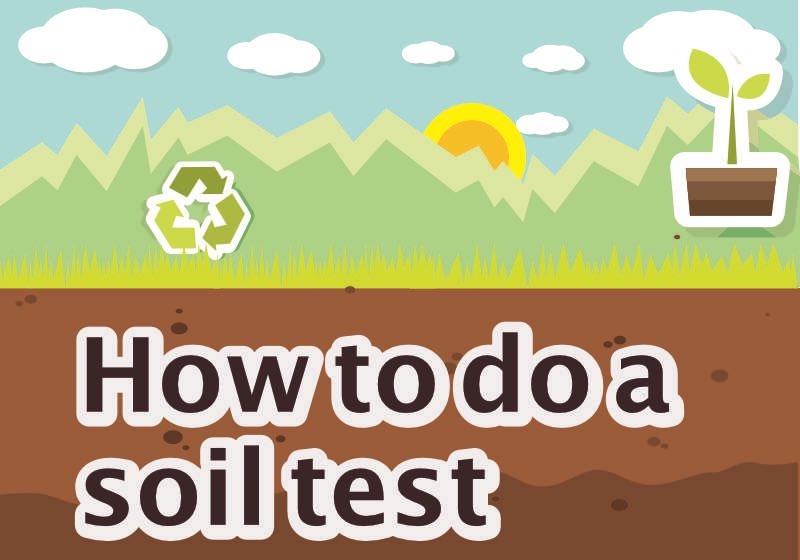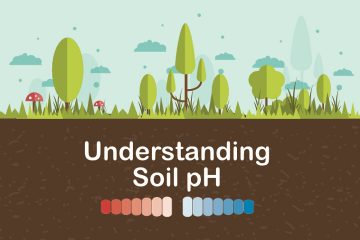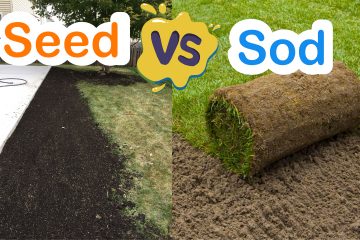How to test soil ph
Optimum growth of turf, flowers, and plants depends on many management factors, one of the most important is ensuring a sufficient supply of plant nutrients. Some of the basic nutrients for grass and plants to thrive are: nitrogen, phosphorus, potassium, iron, calcium, sulfur, and magnesium. Plants obtain carbon, hydrogen, and oxygen naturally from air and water. The remaining elements are derived from the soil. When the soil cannot supply the amount of these nutrients required for adequate growth and development, supplemental fertilizer and lime applications become necessary.
Why do I need a soil test?
A soil sample test will determine nutrient content, composition, and other characteristics such as the acidity or pH level. A soil test is required for accurate fertilizer and lime recommendations.
When to do a soil sample test?
A succesful soil test depends on collecting a representative sample of the soil. Therefore, proper collection of the soil sample is extremely important. Soil samples can be taken at any time of the year, although spring and fall sampling are usually recommended. Separate samples should be collected from areas that differ in soil texture, soil color, or if you have both sodded areas and seeded areas in your lawn.
How to do a soil sample test?
Samples can be collected using a soil tube, soil auger, a knife or spade. Scrape away or discard any surface mat of grass. Clean all tools before you begin the soil sampling process. Place the soil sample in a clean bucket or pan.
Sample the lawn or garden area to the sampling depth indicated below.
| Soil test type | Sampling depth |
|---|---|
| Established turf-grass | 1 - 3″ |
| Soils to be used for establishing a new lawn | 1 - 6" |
| Gardens | 1 - 6" |
| Trees and shrubs | 1 - 12" |
Area soil sampling
Collect 5 random samples within the chosen area. Area soil sampling should be used for small areas, 1000 – 2000 sq ft – fig 1.
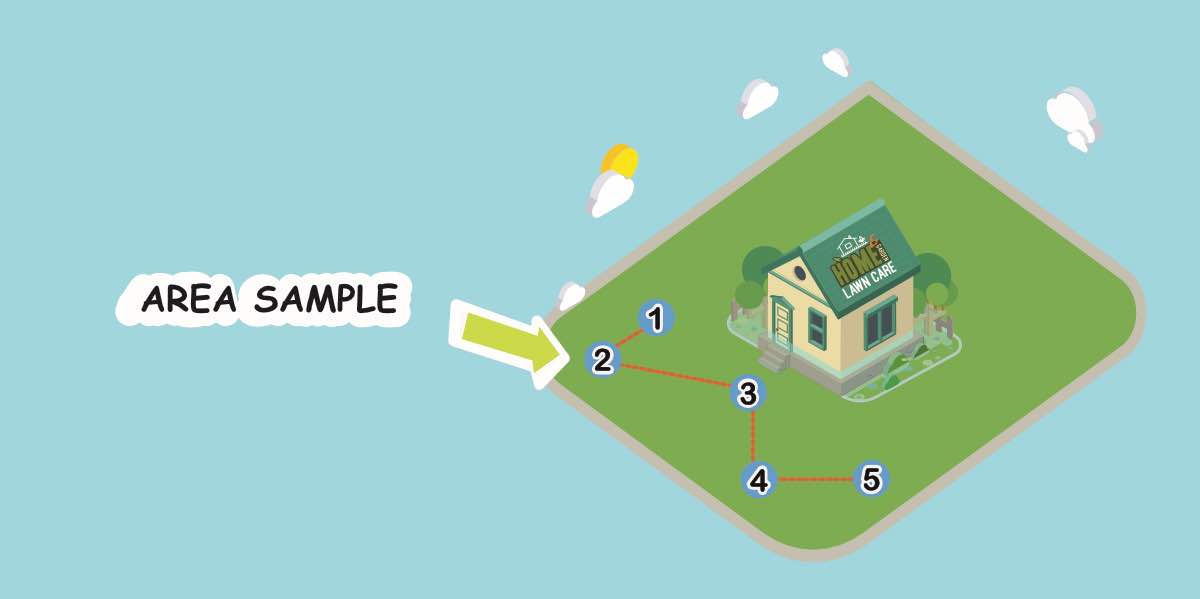
Home lawn soil sampling
For home lawn soil sampling collect around 10 – 15 random samples within your entire lawn if your lawn is under 6000 Sq ft – fig 2. For larger lawns increase the amount of samples depending on lawn size.
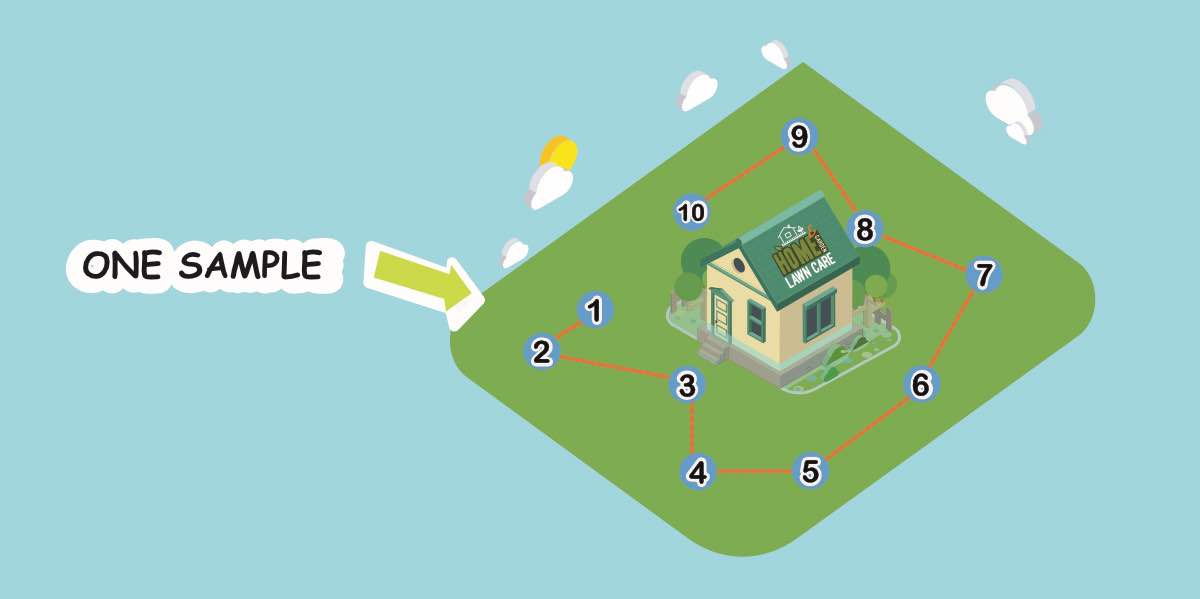
Separate soil sampling
If your lawn or garden has areas which differ in soil quality or conditions, take one sample from each area. For example, you may want to sample the front lawn and the back lawn separately – fig 3. If you have sodded areas and seeded lawn areas, we recommend to take separate soil samples. Remember to keep records for yourself of the areas represented by each sample.
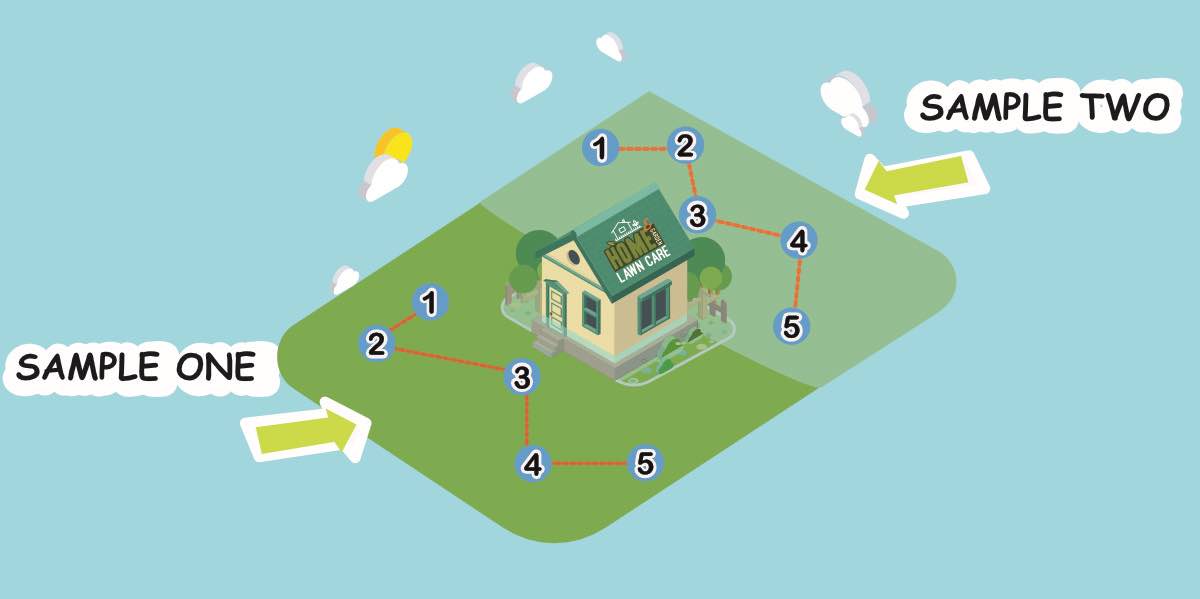
Thoroughly mix the collected soil in a bucket. Place the mixed soil into a clean plastic Ziploc sandwich bag (about 2 cups of soil per bag). Label the sample container and keep a record of the area represented by each sample taken and mail or take the samples to the lab.
Where to send soil samples?
Fill out the soil test form, label your soil sample container(s) with your name and sample number on the container(s), and mail it to your chosen lab along with payment if necessary. Soil test prices range from $10 – $30. Below we have added some labs our customers have used in the past.
Will County Soil & Water Conservation District
1201 S. Gougar Rd, New Lenox, IL, 60451
Phone: (815) 462-3106
Fax: (815) 462-3176
http://will-scookswcd.org
Email: info@will-scookswcd.org
University of Minnesota Extension
Room 135, Crops Research Building
1902 Dudley Ave., St. Paul, MN 55108 CFANS
Office Hours: Monday – Friday 8:00 am to 4:30 pm
Phone: (612) 625-3101
Fax: (612) 624-3420
http://soiltest.cfans.umn.edu/
Email: soiltest@umn.edu
A&L Great Lakes Laboratories, Inc.
( H I C )
3505 Conestoga Drive
Fort Wayne, IN 46808-4413
Phone: (260) 483-4759
Fax: (260) 483-5274
http://www.algreatlakes.com/
Email: Lab@algreatlakes.com

